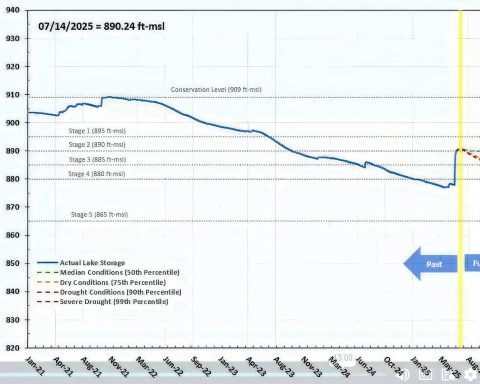The dreaded cedar fever season blew in with a bang over the New Year’s weekend.
The pollen count for Ashe juniper, aka mountain cedar, was “very high” Tuesday at 11,550.
But Karl Flocke, a woodland ecologist for Texas A&M Forest Service, said Central Texans actually caught a break last month.
Ashe juniper trees did not release their infamous pollen in mid-December, the traditional start of the cedar-fever season
There was no uptick in pollen counts until last weekend, probably due to last summer’s drought and high temperatures.
“Certainly it was nice that we didn’t have it start quite as early as we have in the past,” he said.
Now all Canyon Lake residents have to do is tough it out through mid-January, when pollen production reaches its peak then tapers off through the beginning of March — in time for the arrival of oak pollen and other spring allergens.
Cedar fever is the worst west of I-35, where the land is peppered with Ashe junipers mixed with oaks and some other species.
“And because all of those junipers are producing pollen at the same time, you’re going to get a higher concentration of pollen in the air,” said Jonathan Motsinger, Central Operations Department head for Texas A&M Forest Service.
Flocke said the sheer quantity and density of Ashe junipers in central Texas makes the pollen so concentrated “you can’t help but breathe it in, and when you do, your body reacts as it would to any perceived threat — it tries to fight it.”
Recent cold fronts are the culprits behind this week’s hazy skies and allergy miseries.
“Immediately before and after a cold front it gets very dry and windy and the pressure changes very rapidly,” he said. “This triggers the opening of pollen cones and the release of the pollen grains. When you see the pollen billowing off a tree that has just ‘popped,’ or opened its cones, it looks very similar to smoke coming from a wildfire.”
Some symptoms of cedar fever are similar to those of colds and flu, Flocke said. They include fatigue, sore throat, runny nose, partial loss of smell and a slight fever (101.5 degrees or less).
But mucous from allergies is clear and runny, while other infections lead to thicker colored mucous, he said.
Those particularly susceptible to cedar pollen are advised to follow news reports for warnings about heavy pollen days.
Flocke said doors and windows should be kept closed and suggested limiting time outdoors and changing air-conditioning filters in cars and homes.
While cedar fever might sound and seem particularly hostile, Ashe junipers are really just a species like any other, feeling out the conditions and waiting for the perfect moment to release their pollen in order to set their offspring up for success come springtime, he said.




